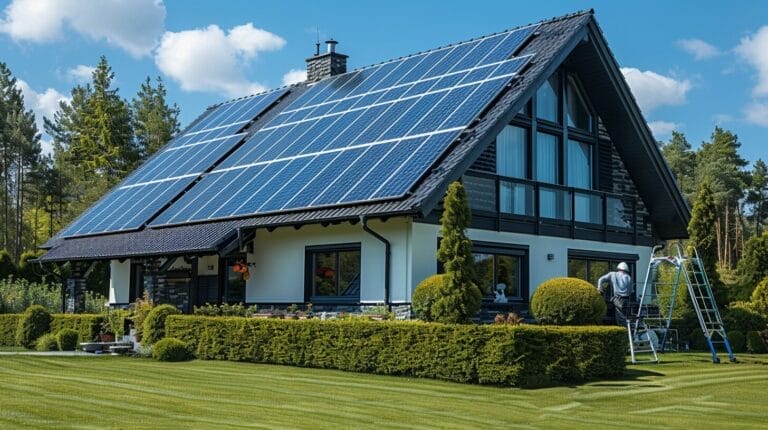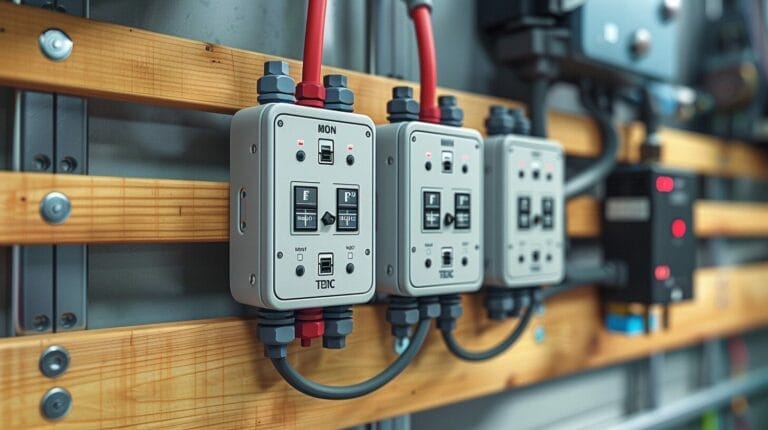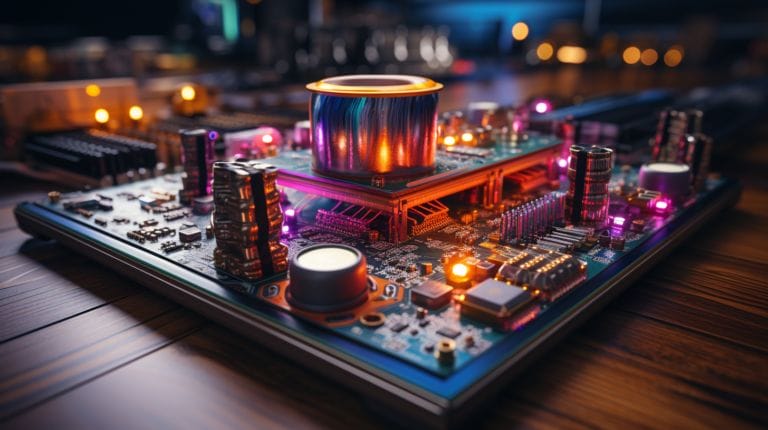Light Fixture Max Wattage Led: A Guide to Optimal Lighting
Have you ever wondered why choosing the right wattage for your LED light fixture is crucial for achieving optimal lighting in your space? Using an LED bulb can often provide the desired brightness with a lower actual wattage.
Understanding the nuanced relationship between light fixture max wattage and LED bulbs can significantly impact the ambiance and functionality of your environment, especially when considering brighter LEDs or CFLs.
Let’s shed light on how to strike the perfect balance between wattage and illumination with our Light Fixture Max Wattage Led guide, ensuring your space is not only well-lit but also energy-efficient.
Key Takeaways
- Adhere to max wattage limits for LED fixtures to ensure safety and longevity.
- Choose LED bulbs with wattage at or below the fixture’s max for optimal performance, ensuring a brighter light without exceeding limits.
- Consider lumens output for efficient brightness levels in LED lighting.
- Select the right LED light bulb with a colour temperature to enhance ambiance and energy efficiency in different settings.
Understanding the Concept of Max Wattage in LED Light Fixtures

In the realm of LED lighting, understanding the concept of max wattage is paramount to avoid potential consequences such as overheating or decreased lifespan and efficiency of the LED bulbs. Max wattage refers to the maximum amount of power that a light fixture can safely handle. Optimizing performance is not only about preventing negative outcomes but also about adhering to the specified max wattage for efficient and durable operation.
How to Determine the Max Wattage for Your LED Light Fixture

Determining the max wattage for an LED light fixture involves simple math. For instance, if your fixture states a maximum wattage of 60 watts, you should choose an equivalent LED bulb that consumes less or exactly 60 watts.
Understanding the lumens produced by the LED bulb is also crucial, as a brighter LED can often provide better illumination than traditional bulbs. Selecting an LED bulb with the appropriate wattage and lumens output ensures your fixture operates efficiently and effectively, providing the desired level of brightness while conserving energy.
Exploring the Efficiency of LED Bulbs in Different Light Fixtures

LED bulbs demonstrate remarkable efficiency in various light fixtures, significantly reducing energy consumption compared to traditional light bulbs. When exploring the efficiency of LED bulbs in different light fixtures, several key points come to light: the importance of matching the bulb’s actual wattage with the fixture’s maximum allowance and the efficiency benefits of using an LED bulb.
- Energy Efficient: LED bulbs are highly energy efficient, converting a higher percentage of electricity into light compared to traditional incandescent bulbs. This efficiency results in lower energy bills and a reduced environmental impact.
- Wattage Comparison: LED bulbs require significantly lower wattage to produce the same amount of light as incandescent bulbs. For example, a 10-watt LED bulb can provide the same brightness as a 60-watt incandescent bulb, showcasing the efficiency of LED technology.
- Light Fixture Compatibility: LED bulbs are compatible with a wide range of light fixtures, including recessed lighting, track lighting, pendant lights, and more. Their small size and versatile design make them suitable for various applications, offering flexibility in lighting design without compromising efficiency.
Impact of Colour Temperature on Wattage in LED Lighting

The colour temperature of LED bulbs plays a crucial role in determining the wattage needed for desired lighting effects. Lower colour temperatures, such as warm white (2000K-3000K), tend to require less wattage to achieve the same brightness compared to higher colour temperatures like cool white (4000K-5000K) or daylight (5000K-6500K).
Choosing the right colour temperature not only impacts the actual wattage consumed but also influences the overall lighting effect, particularly when a bulb produces a higher wattage equivalent.
Is the Max Wattage for Light Fixtures the Same for Full Spectrum LED Grow Lights?
When considering the max wattage for light fixtures, it’s important to note that it varies for different types of lights. For full spectrum LED grow lights, the recommended distance from the plants is crucial. It is advisable to follow the manufacturer’s guidelines to ensure optimal growth and avoid any potential damage to the plants.
Practical Tips for Safe and Effective LED Lamp Usage

Considering the importance of maintaining optimal LED lighting performance, it’s crucial to implement practical tips for safe and effective LED lamp usage. To ensure the longevity and efficiency of your LED fixtures, here are three key recommendations:
- Mind the Wattage: When using LED lamps, it’s essential to pay attention to the wattage of the bulb, ensuring it’s within the fixture allows range and considering if the LED has a higher wattage equivalent. Opt for bulbs with wattage that aligns with the manufacturer’s recommendations for the fixture, ensuring the bulb produces visible light compatible with the fixture’s design. Using high wattage bulbs can’t only lead to excessive heat generation but also compromise the longevity of the LED fixture.
- Focus on Lumen Output: While wattage indicates power consumption, lumens measure brightness. When selecting LED bulbs, prioritize lumen output over wattage to ensure you achieve the desired level of brightness, which might mean choosing a bulb that produces light equivalent to a 100w incandescent bulb but with lower wattage. This approach not only enhances the quality of light but also contributes to energy efficiency.
- Prioritize Safety: Safety should always be a top priority when using LED lamps to produce light effectively. Avoid exceeding the maximum wattage capacity of your fixtures, as this can pose a fire hazard, particularly with higher wattage incandescent light bulbs. Consider switching to an LED bulb which often has a higher wattage equivalent but lower actual wattage. Additionally, handle LED bulbs with care, ensuring they’re properly installed and not exposed to excessive heat sources. By prioritizing safety, you can enjoy the benefits of LED lighting while minimizing risks.
Conclusion
In conclusion, understanding the concept of max wattage in LED light fixtures is crucial for optimal lighting.
By determining the right wattage for your LED fixture and considering the efficiency of LEDs, you can create a safe and effective lighting environment.
Remember to also take into account the impact of colour temperature on wattage to achieve the desired lighting atmosphere, ensuring the fixture allows for the intended bulb type.
By following these practical tips, you can make the most out of your LED light fixtures.
Frequently Asked Questions
What is the maximum wattage for an LED light fixture?
LED light fixtures typically have a maximum wattage rating, often at 60W or lower depending on the fixture. It is crucial to adhere to this rating to ensure safety and optimal performance.
Can I use a higher wattage LED bulb in a fixture that has a 60W rating?
It is not recommended to use a higher watt LED bulb than the maximum rating specified for the fixture. Doing so can lead to overheating, reduced lifespan of the fixture, and potential safety hazards.
What does it mean when a fixture says “not to exceed 60 watts”?
The instruction to not exceed 60 watts on a fixture indicates the maximum wattage that should be used in that particular fixture. It is crucial to follow this guidance to prevent damage to the fixture and ensure safe operation.
How do I find the equivalent LED bulb for a 60W incandescent bulb?
To find the equivalent LED bulb for a 60W incandescent bulb, look for an LED bulb that produces the same amount of light (lumens) as a 60W incandescent bulb but consumes significantly less wattage, usually around 8-12W.
Can I use a CFL or LED bulb in a fixture that previously had an incandescent bulb?
Yes, you can typically replace an incandescent bulb with a CFL or LED bulb as long as the socket and fixture are compatible. Make sure to match the wattage and follow any specific guidelines provided by the fixture manufacturer.







